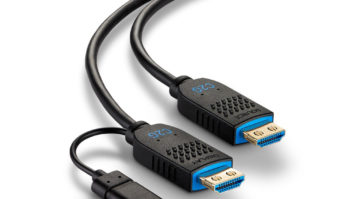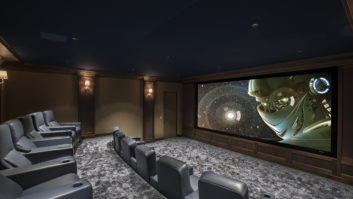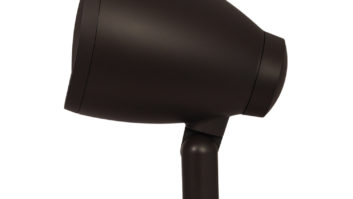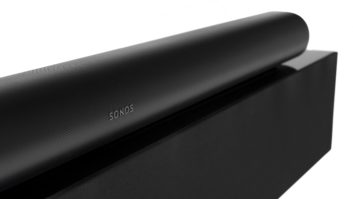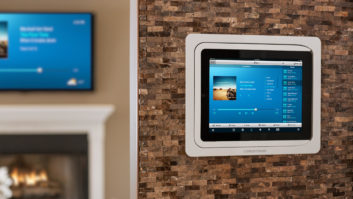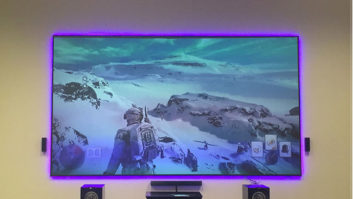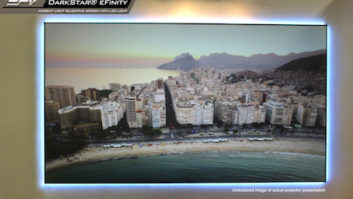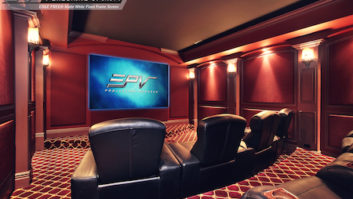The structured wiring enclosure is the communications crossroads in the digital home. It is the point from which all communications-related wiringdata network, telephone, video, and securityemanates. It performs for communications and signal management what the electrical service panel does for the homes power wiring. In the words of Gordon Waldhausen, product manager for On-Q Legrand, The structured wiring enclosure is the hub of home technology.
Structured wiring is a concept that first arose around the early 1990s. It is not something that every potential homeowner (or even builder) is intimately acquainted with, but awareness has nonetheless increased greatly in the last 10 years, driven partly by the increasing number of homes with multiple computers, and partly by demand for Internet access and broadband proliferation. As Kirk Horlbeck, senior VP for corporate marketing and international development at Liberty Wire and Cable, noted, Some realtors now have a pre-wire area on their property data sheets. And signal managementwhere the signal comes in, and how it gets distributed around the propertyhas really become a buzzword.
Agents of Change
Like electrical panels, structured wiring enclosures dont change fashions at the rate of, say, consumer electronics, but they do evolve. Among the many factors driving the evolution of these enclosures is the increased awareness, by homeowners, builders, and architects, of the importance of connectivity within the home. Not only are more new homes getting structured wiring, but what used to pass for structured wiringa couple of drops throughout the homeis being replaced with more drops in more rooms. The result is an increasing need for larger wiring enclosures.
Jay Kilby, senior product manager for telecom equipment provider Suttle, said that he has also observed a movement toward incorporating more applications like whole-house audio and others into the structured wiring panel. Theres also more demand for home healthcare monitoring and people wanting to integrate digital video recorders (DVRs), he said.
Kilby also noted that with more people hanging flat-panel displays on the wall, there isnt as much furniture in which to store the electronics. All of this translates, he explained, into more of the electronicswhich might previously have been located at the entertainment centermoving toward the wiring enclosure. So, not only is there more wiring in the average enclosure, but now theres active electronics, as well. This further drives the need for more space within the enclosure, but also electrical power, and a need to dissipate heat via venting and, in some cases, fans.
With the increasing role of the panel, even the aesthetics of the once utilitarian can itself are changing. In custom homes were seeing larger enclosures with decorator doors, incorporating smoked plexiglass panels, said Darrel Hauk, president and CEO of Channel Vision.
Another key trend is that network-grade (Cat-5, 5e, and 6) unshielded, twisted-pair (UTP) wiring, over time, is venturing beyond the role of carrying computer data packets. One nice advantage of this type of twisted-pair wiring is that aside from its main network role, it serves well in carrying plain-old telephone system (POTS) signals. While some might see using network-grade cable for the homes phone wiring as overkill, theres a lot to be said for future-proofing, especially in an industry that moves as quickly as communications.
Dino Mevoli, national training manager at ELAN Home Systems, noted that while you may have a phone jack in one specific place in the home today, you may want that to be a network jack tomorrow. If everything is designed in a home-run configuration [every jack in every room gets an individual, non-shared, uninterrupted cabling run back to the central wiring panel], and you have individual modules for voice and data, then you have the flexibility to lift a cabling run off of the telephone hub (at the wiring enclosure), put an RJ-45 connector on it, and plug it into the network hub (or switch), he explained.
Many vendors are now using UTP wiring to distribute audio, utilizing either the A-BUS system or proprietary schemes of similar topology, in which this wiring feeds signals toand powersamplifier/keypads located in the rooms or zones that they serve. On-Qs Waldhausen, for example, noted that his companys proprietary lyriQ multi-room audio distribution system utilizes network cabling to leverage standardization of the installation practices. If your technicians are trained in Cat-5 wiring standards, they can take our lyriQ system, our intercom, any of our products, and apply that installation methodology.
Now that manufacturers have developed ways to run even video over UTP wiring, it is becoming more common in homes. Not that dealers are rapidly switching their customers away from coax for video. Most dealers arent ready just yet to make that change, but its nice to know you have the option to do so. In fact, having all of these UTP cables converge on a central wiring enclosure makes it very easy to re-purpose any of these UTP cabling runs at a future date, for another type of service. It also means future service opportunities for dealers and installers.
How to Choose the Right
Panel. Considerations for a structured wiring enclosure depend on the details of a specific installation, so it pays to gather as much information as possible about the customer and their goals for the installation, as well as details of the home and layout.
Tim Troutman, senior product manager for Honeywells custom electronics business unit, noted that the wants and needs of a high-end custom homebuyer are different than those of the production homebuilder. Likewise, new construction versus retrofit may influence selection. Ultimately, the goal is to choose a reputable brand, where you can count on quality in every sense of the word, he said. Second to brand, the ability of the supplier to deliver solutions is key. Low-level integration, testing, and certification issues are not the types of things dealers and installers want to be burdened with.
Channel Visions Hauk highlighted the importance of UL approvals, saying that most building inspectors want enclosures to be UL approved.
When asked to highlight the key considerations for selecting the proper structured wiring enclosure for a home installation, Cooper Wiring Devices product manager, Jason Sherrill, provided these recommendations:
It should fit the job [in terms of] having enough space to accommodate all of the wiring and equipment. There should be room for expansion to allow for future upgrades.
It should have flexibility to provide multiple solutions. Most enclosures carry Underwriters Laboratories UL1863 (structured wiring components) listing, but some are also listed for UL1023 (security systems).
It should be easy to install. Look for unique features that help you save time on the job, such as multiple knockouts for cable feeds and junction boxes; enclosure doors or bezels that cover drywall cuts; options for either surface or flush mounting; and enclosures that include a ground lug.
UStecs Lenio agreed that if the installation is burdensome, It will take too much time to install, costing the dealer and homeowner excessive labor costs. Or even worse, it may not get installed correctly, sabotaging the entire project, he said.
Does the enclosure have AC power outlets to power any active electronics? Some vendors are going so far as to offer a multi-outlet power supply that can provide DC voltage to the electronic equipment, eliminating the need for an unsightly collection of wall-wart-type transformers.
Libertys Horlbeck also noted that if you want the option of surface-mounting an enclosure, look for one that has some sort of built-in standoffs stamped into the back panel. This feature provides more clearance between the back of the enclosure and the wall surface or panel on which it is mounted. You will need that clearance so that the mounting lugs of any modules or brackets can properly engage in the slots on the enclosures back panel. Also, look for knockouts that allow wiring to exit the enclosure in any direction.
Whats New. Enclosure models, of course, dont change every year, so most of the recent activity in this category has been in the way of a new model here or there, and new options or accessories for existing products.
Channel Visions Hauk said that his company has recently added a new, affordable, 12×14-inch plastic enclosure with hinged cover, called the C-0113. At the other end of the spectrum, Channel Visions 50-inch C-0150E is, according to Hauk, the largest in the industry.
Other companies are making incremental additions to their lines. Liberty recently switched from a cover that was screwed down to one that is now hinged. Early focus groups initially pointed us toward screw-on, removable covers, as offering easier access for the installer. But feedback from more recent focus groups is favoring hinged covers, Libertys Horlbeck said.
ELAN has added two new hinged covers for the companys 18- and 36-inch enclosures, which give more internal depth to them.
Suttle, which markets its Suttle SOHO Access enclosure line to the residential systems market, has added a new stylized cover that adds more depth, as well as venting, to the enclosure. Suttle plans fan options, where additional cooling is needed.
Following Legrands purchase of Greyfox and, more recently, On-Q, Waldhausen noted that On-Q is in the process of developing a new, rationalized enclosure line that takes the best of Greyfox and On-Q, as well as the best of our collective experience. The new converged line is expected to debut in the first half of 2007.
Structured Wiring: On the Rise?
Many of the vendors interviewed for this article pointed to a steadily growing awareness of and demand for structured wiring, but not universally.
In the early 1990s, we saw a huge jump in the industry, as the Internet and data networking became important to homeowners, recalled UStecs Lenio. Nothing like that exists today.
Likewise, Brad Wills, director of new business development at Schneider Electric/Square D, sees demand for structured wiring as having peaked. Some studies show more current homebuyer interest in sexier things, like whole-house audio. Wills feels that interest in home entertainment, music, and video distribution could re-ignite demand for network infrastructure. When we get the licensing issues for movies settled, and people can rip movies and put them on a video server, thats when a new age of structured wiring may evolve, he said.
Wills also cited the increased awareness and usage of wireless networks as another possible factor affecting demand for structured wiring. If wireless can do the job, why invest much into wired infrastructure?
Wireless networking is certainly a great retrofit solution for those homes built before the dawn of networking, but wireless technology does face challenges. On-Qs Waldhausen puts it this way: We find that with the proliferation of broadband and Internet access, people want that connectivity throughout the home, and they are beginning to realize that while wireless networking is a great thing, nothing beats the speed and reliability of a wired connection.
Though data transfer rates are going up for Wi-Fi networks, wireless cant come close to the speeds that wired networks can deliver. Perhaps more importantly, wireless technologies are plagued with latencies much greater that what wired networks yield. Wireless technologies are also subject to radio-frequency (RF) shadowing, which is not a problem for wired ethernet. In addition, while many wireless networks can provide sufficient data-transfer rates to handle high-fidelity audio (provided latency and jitter are well-controlled), wireless technology is only just beginning to reach the point where it can deliver high-quality video.
Modern networks should take maximum advantage of all available technologies, utilizing the best of each. Most of us prize the freedom to roam with a laptop or PDA about the living room, family room, or patio, and enjoy having a network connection while untethered by a cable. At the same time, the link between a video server and the television is best served by a wired connection.
A solid and capable network infrastructure is foundational to todays connected home, making it ripe for todays technology but also ready for tomorrows. New construction or major remodeling projects are golden opportunities to ensure that the home has this solid foundation. It is an investment that the homeowner will never regret, and the structured wiring enclosure is central to that infrastructure.
Alan R. Frank ([email protected]) is a networking consultant and freelance writer covering the fields of communications, networking, and digital entertainment.
